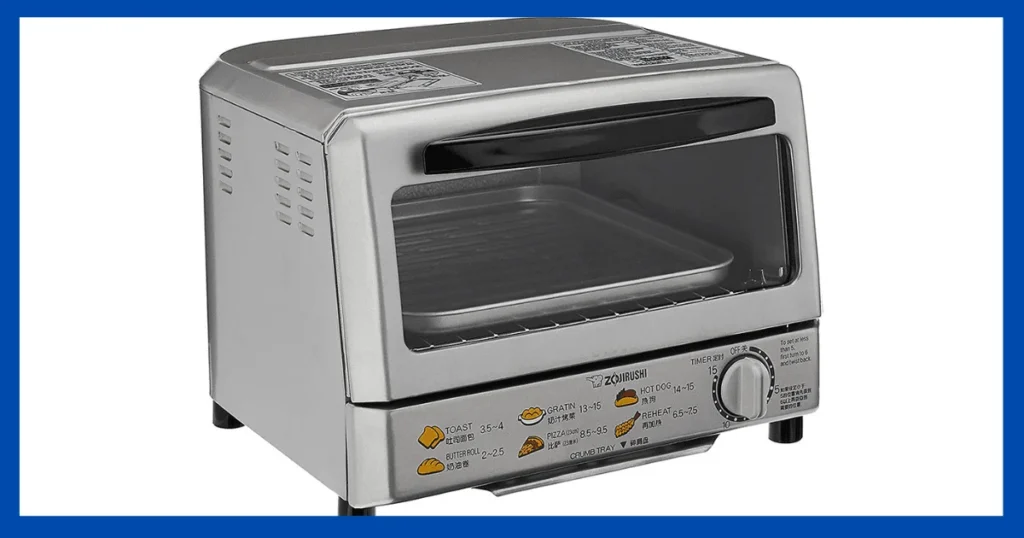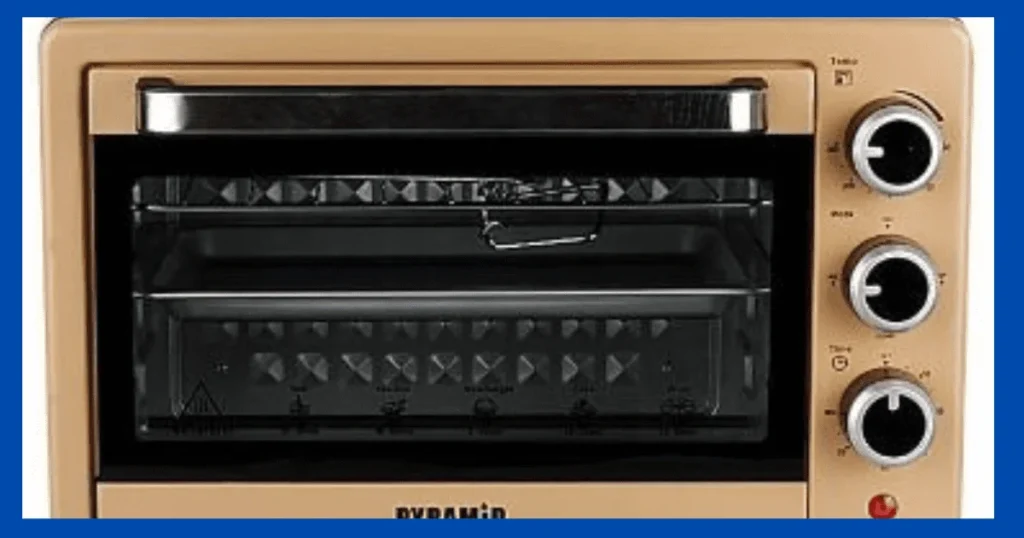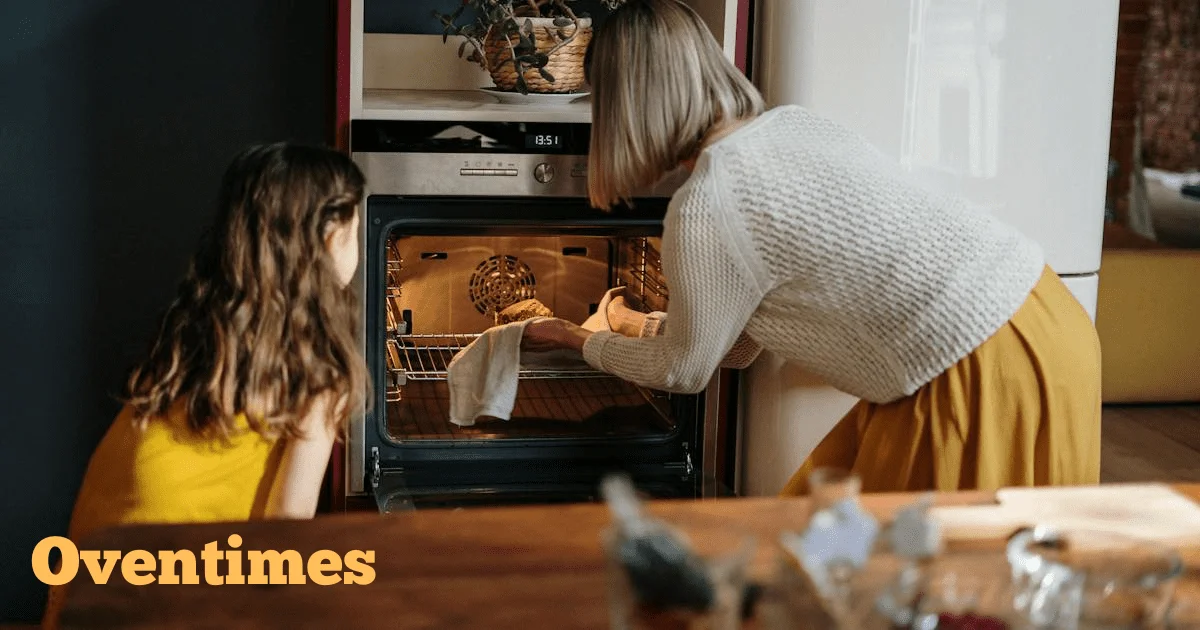An oven is an enclosed, heated compartment used for baking, roasting, and heating food. Ovens use dry heat and convection to cook food
. The word “oven” originated in the early 14th century, derived from the Old French word “forn” meaning “furnace, oven”. Over time, the term evolved into the modern English word “oven”.
Ovens have been used for cooking since ancient times. Early ovens were simple pits dug into the ground and heated by burning wood.
More advanced ovens emerged in ancient Greece and Rome, made from clay or brick with a fireplace on the side or bottom. Modern ovens use gas, electricity, or microwaves as a heat source. However, the basic function remains the same – applying dry heat to food.
Types of Ovens
There are several common types of ovens used today:
- Conventional Oven: The standard oven found in most kitchens. It uses radiant heat from electric heating elements or a gas burner to cook food. Conventional ovens have a temperature range from 150-550°F.
- Convection Oven: Circulates hot air around the oven cavity using a fan to promote even cooking. Convection ovens cook food faster and more evenly.
- Microwave Oven: Cooks food using microwave radiation to heat water molecules in the food. Microwaves cook food very quickly but do not brown or crisp like conventional ovens.
- Toaster Oven: A small countertop oven good for small items like slices of bread, cookies, or heating leftovers. Provides top and bottom heating elements.
- Pizza Oven: Reaches very high temperatures up to 700°F to mimic the conditions of a brick pizza oven. Cooks pizza rapidly with an authentic crisp crust.
- Outdoor Oven: Built into an outdoor kitchen or pizza oven for grilling, smoking, roasting, and baking. Uses wood, charcoal, or gas for fuel.
Oven Components
While oven designs can vary, most contain similar basic components:
- Oven cavity – The enclosed compartment that contains the food. Usually made of enameled steel or stainless steel.
- Racks – Metal shelves that hold food inside the oven cavity. Often adjustable.
- Heating elements – Provide the heat for an electric oven. Elements may be located on the top, bottom, or back wall.
- Burner – Supplies heat in a gas oven. Located on the bottom of the oven.
- Thermostat – Regulates the internal temperature of the oven.
- Insulation – Lines the walls of the oven to retain heat. Made of fiberglass or ceramic fibers.
- Venting system – Releases hot air and steam from the oven cavity. Usually consists of vents and an exhaust fan.
- Glass door – Allows viewing the food while cooking without losing heat. Has a high heat tolerance.
- Oven controller – Lets you set cooking modes, temperature, and timer functions digitally.
- Accessories – Items like baking pans, racks, pizza stones help cook specific dishes.
Table showing different types of ovens and their key attributes:
| Oven Type | Heat Source | Temperature Range | Key Attributes |
|---|---|---|---|
| Conventional | Electric elements, gas burner | 150-550°F | Standard oven for baking, roasting |
| Convection | Electric heating element, fan | 150-550°F | Uses fan for even cooking |
| Microwave | Microwave radiation | Varies | Rapid cooking, no browning |
| Toaster Oven | Electric elements | Up to 450°F | Small oven good for quick tasks |
| Pizza Oven | Wood, gas, electricity | Up to 700°F | Cooks pizza rapidly with crisp crust |
| Outdoor Oven | Wood, charcoal, gas | Up to 750°F | Grilling, smoking, baking outside |
Origins and History of the Oven

The oven has ancient origins, used for cooking and baking for thousands of years across many cultures. Here is an overview of the history and development of ovens:
Early Clay Ovens
Some of the earliest ovens were simple pits dug into the ground and used for roasting meat, cooking bread, and ceramic firing.
Evidence of Neolithic underground clay ovens dates back over 8,000 years in the Middle East. These were shaped like beehives with an opening at the top.
Around 3,000 BC, ancient Egyptians and Babylonians built oval-shaped clay ovens for baking bread. The thick clay helped retain heat and radiate it evenly for baking. Ancient Greeks and Romans advanced oven designs, creating brick domed masonry ovens heated by wood fires.
Medieval Ovens Evolve in Europe
During the Middle Ages, ovens evolved across Europe for baking bread. Ovens were located in bakeries and separate from home kitchens. Masonry oven designs developed such as:
- Black ovens – A stone or clay dome structure with an opening on one side. Used green wood for fuel.
- White ovens – Brick ovens with an arched opening in the front. Circulated hot air better than black ovens.
- Cone ovens – Conical shaped masonry ovens with a side firebox. Allowed better isolation of the fire.
Medieval bakers could carefully control temperature using these ovens. King Richard II instituted the first known oven regulations in England in 1393.
Kitchen Ovens Expand Uses
In the mid-1700s, early enclosed iron stoves with the firebox and oven together started appearing in kitchens, like the Rumford design. Benjamin Thompson helped improve heat circulation with these stoves.
In the 1800s, ovens expanded beyond just baking:
- 1828 – British inventor James Sharp patented a gas oven for cooking food, not just baking.
- 1834 – US inventor Thomas Clark designed a gas stove with a baking oven compartment.
- Late 1800s – Ovens added adjustable shelves and thermometers for more uses.
Modern Electric and Microwave Ovens
The early 20th century brought significant oven innovations:
- 1920s – Electric ovens gained popularity in households. General Electric produced an electric oven in 1927.
- 1945 – Raytheon scientists accidentally discovered microwave cooking with radar technology.
- 1967 – A&M introduced the first countertop, domestic microwave oven.
Today, while ovens still use the same basic concept of applying dry heat to food, modern options like convection, broilers, self-cleaning, and smart connectivity make them more versatile and user-friendly.
Why Is It Called an Oven? Etymology and Name Origins

So why do we call it an “oven” in English? Here is a look at the etymology and origins of this cooking appliance’s name:
Derivation of the Word Oven
The modern English word “oven” evolved over centuries from various languages:
- Old English – ofen
- Old French – forn
- Latin – furnus
- Proto-Indo-European – bhur- meaning fire
The shared root word across these languages referred to burning, fire, or heating. This reflects the fundamental purpose of an oven being an enclosed space for applying heat to food.
When Was Oven First Used?
The word “oven” first appeared in written English in the early 13th century, around 1225-1250 AD. However, ovens existed long before, dating back over 8,000 years.
Earlier terms for oven include:
- Furnace – Originally meant an enclosed structure for smelting or calcining metals. By the late 14th century, it also referred to ovens for baking and cooking.
- Forno – The Italian word for oven, derived from Latin. Sometimes used synonymously with oven in 16th and 17th century English texts.
Other Historic Names for Ovens
Across different languages and regions, people used other unique names for ovens:
- Tandoor – Traditional cylindrical clay or brick ovens used in India and Pakistan.
- Kamado – A Japanese wood or charcoal burning ceramic oven used for cooking rice, fish, and stew.
- Botur – Ancient Armenian tonir ovens, cone-shaped and fueled by manure.
- Igloo – Dome-shaped clay ovens used by the Inuit for cooking meat and fish.
So while the appliances have changed over time, the word “oven” has referred to enclosed cooking devices for centuries in English.
How Did the Term Oven Prevail in English?
While terms like forno, furnace, and Ofen existed in other languages, why did “oven” become the common name used in English?
A few key reasons:
- Anglo-Saxon Origins – Oven derived from the Old English word ofen, giving it roots in Anglo-Saxon and early English.
- Specificity to Cooking – Oven refers specifically to an enclosed appliance for cooking and baking. Furnace and forno had broader meanings.
- Early Adoption – Oven was used early on in Middle English and appeared in cookbooks and home guides. This cemented it as the common term.
- Simplicity – Oven is a simple one-syllable word that is easy to say and remember. More complex versions like furnace fell out of favor.
- Adaptability – As oven designs changed over time, the word oven remained applicable, while other terms like igloo or tandoor described specific regional oven types.
So the word oven prevailed in English due to its Anglo-Saxon origins, simplicity, early adoption, and adaptability to changing oven technology while maintaining its specific meaning of an enclosed cooking appliance.
Conclusion
In conclusion, the word “oven” has its linguistic origins in Old English, French, Latin, and beyond – all carrying the central meaning of an enclosed, heated space.
While ovens themselves have evolved over thousands of years across many cultures, adopting new heat sources, features, and designs, the fundamental concept remains baking, roasting, and cooking food with dry heat.
The term “oven” has endured in the English language since the Middle Ages precisely because it encapsulates this essential function in a simple, specific name.
So next time you bake cookies or pizza, roast vegetables, or warm up leftovers, think about how this ubiquitous kitchen appliance got its name.
Frequently Asked Questions
Here are some frequently asked questions given below:
What temperature should I bake cookies at?
350°F is the standard baking temperature for most cookie recipes. Baking at a slightly lower 325°F can help cookies retain softness. Some specialty cookies call for up to 375°F for crispness. Adjust cookie sheet placement as well – upper racks bake softer cookies.
How hot does an oven get?
Standard home conventional ovens reach maximum temperatures of 500-550°F. High heat self-cleaning modes go up to 800°F. Commercial convection ovens reach 575°F. Specialty ovens like outdoor pizza ovens can reach over 700-800°F.
What is the most energy efficient oven?
Convection ovens are generally more energy efficient, using fans to circulate hot air rather than relying solely on heating elements. Also look for well-insulated ovens with high R-value. Electric induction cooktops paired with convection electric ovens make for an energy efficient combination.
How long do oven last?
The average lifespan of an oven is 12-15 years, though well-maintained ovens can last over 20 years. Signs of wear include inaccurate temperature, uneven cooking, loud noises, slow preheating, and elements that burn out frequently.
Is aluminum foil safe for lining oven racks?
Lining oven racks with aluminum foil prevents food and grease build up. However, consistently using foil can disrupt airflow and cause hotspots in the oven. Occasionally lining racks is safe, but foil should not be used each time.
